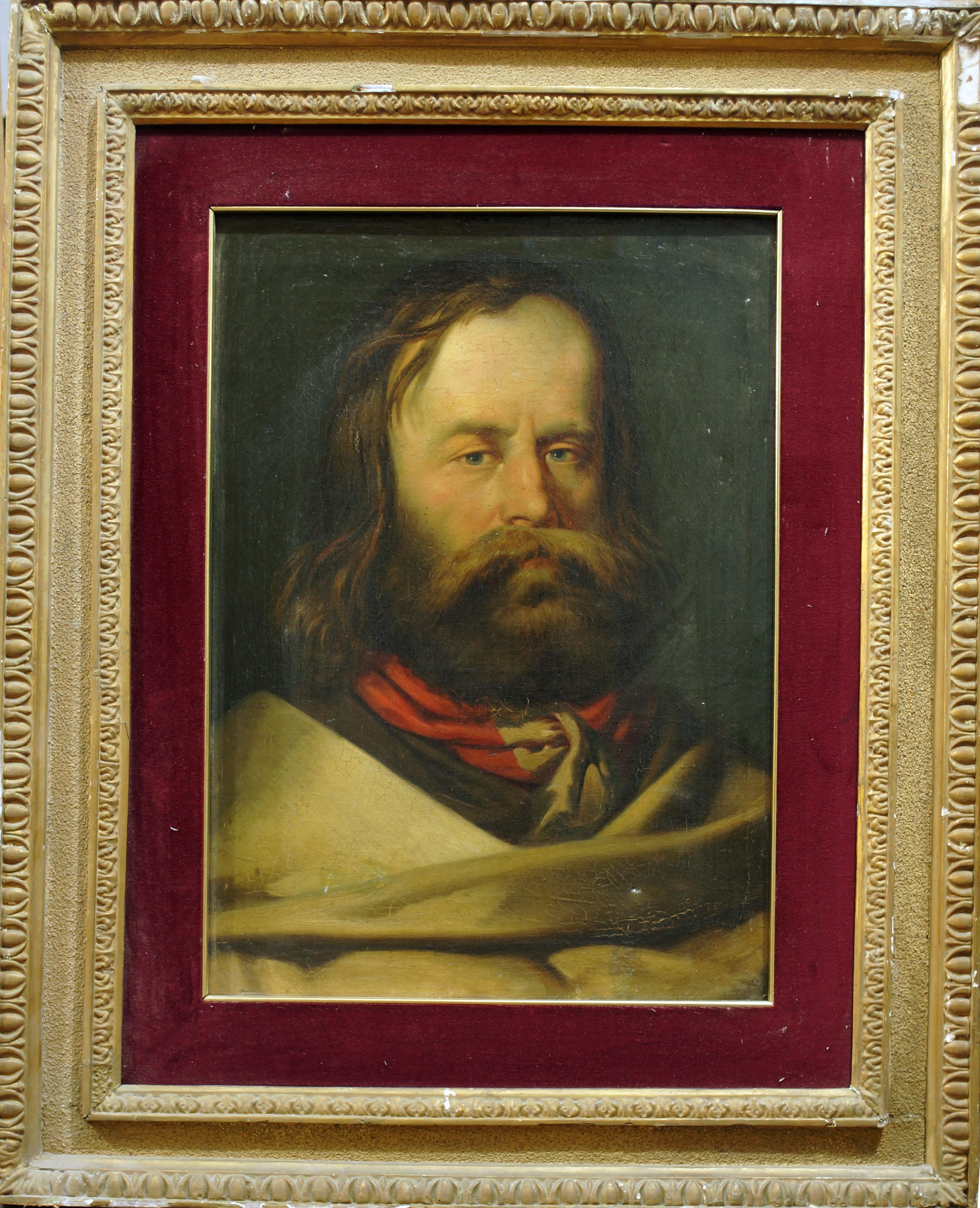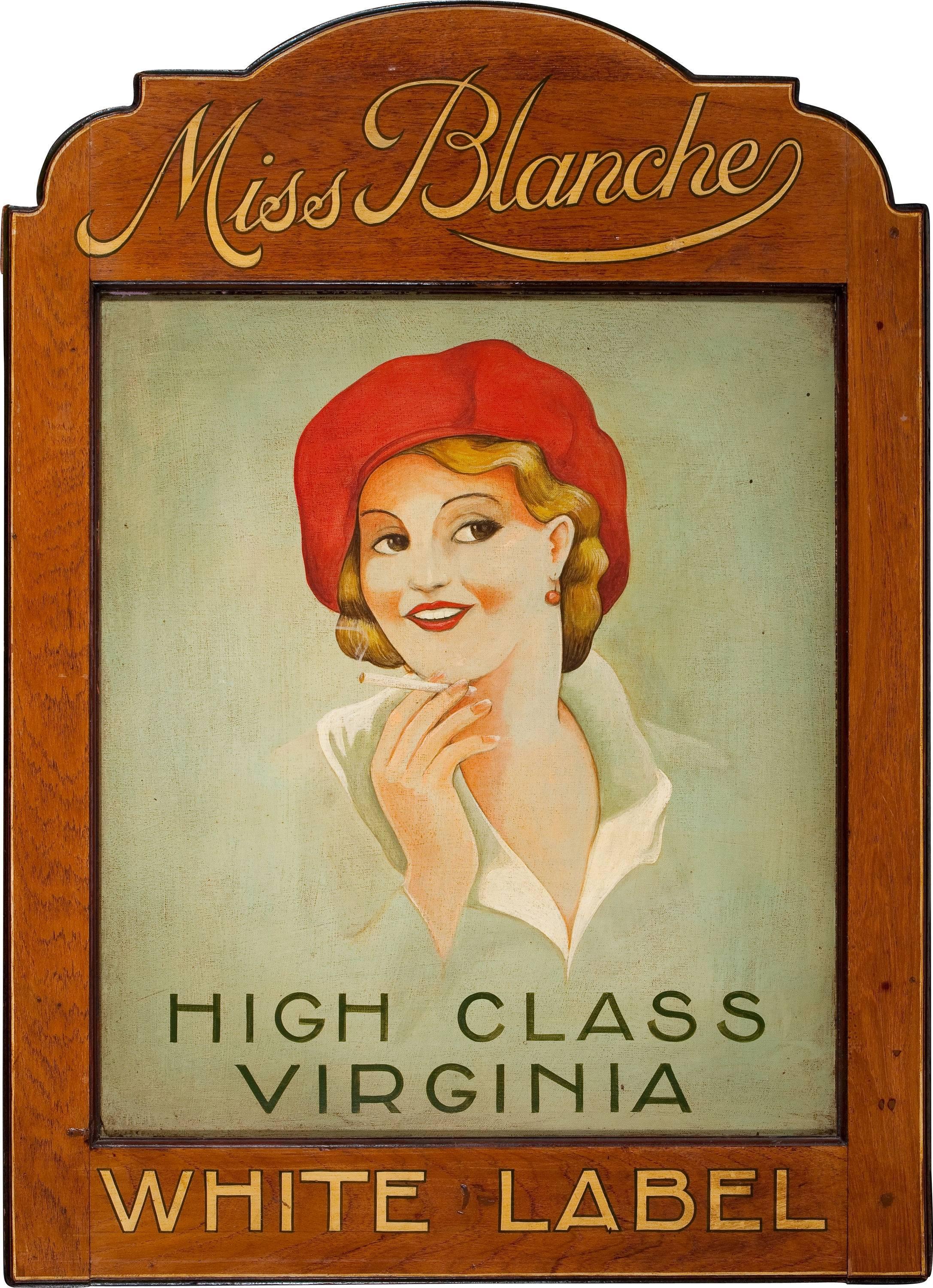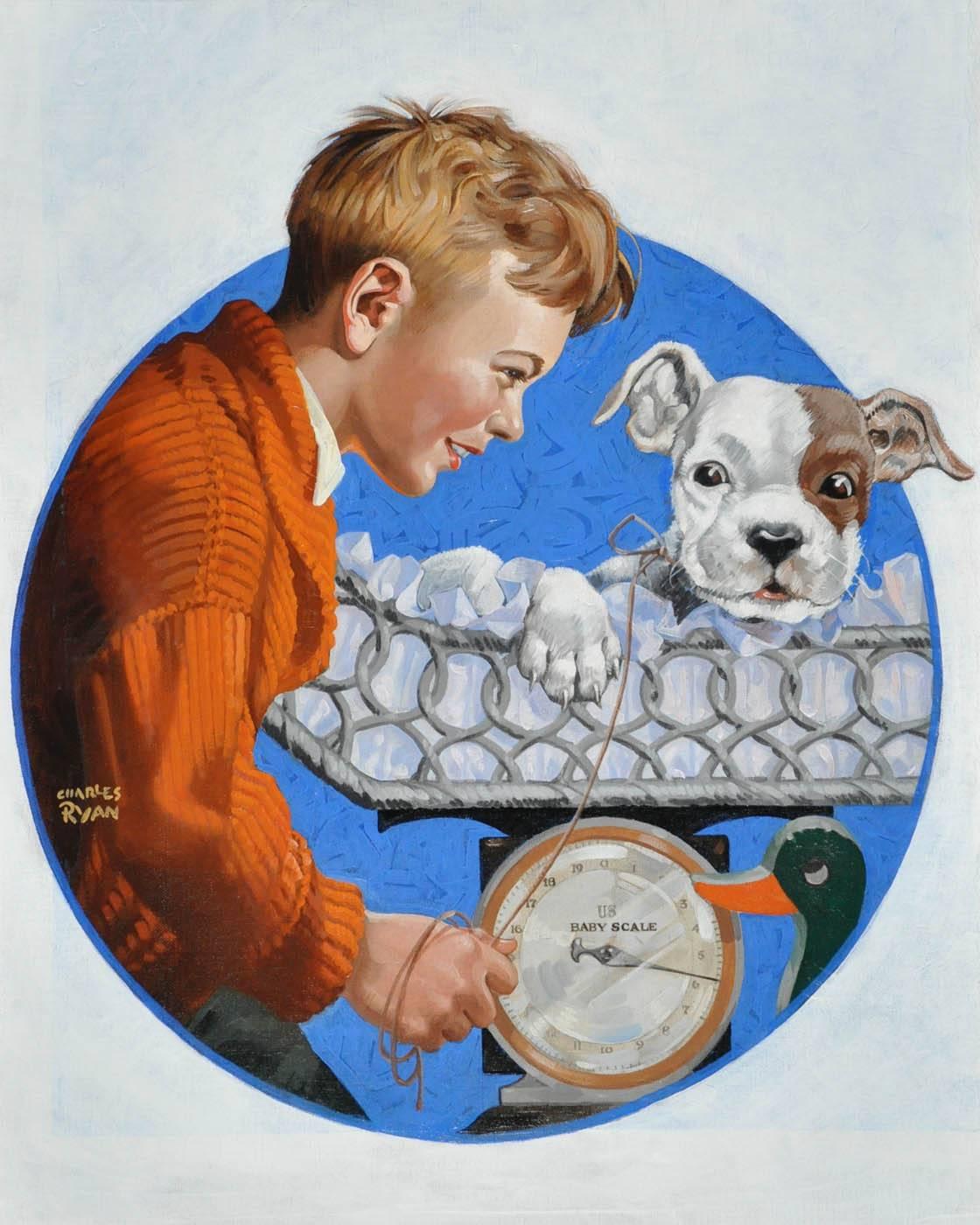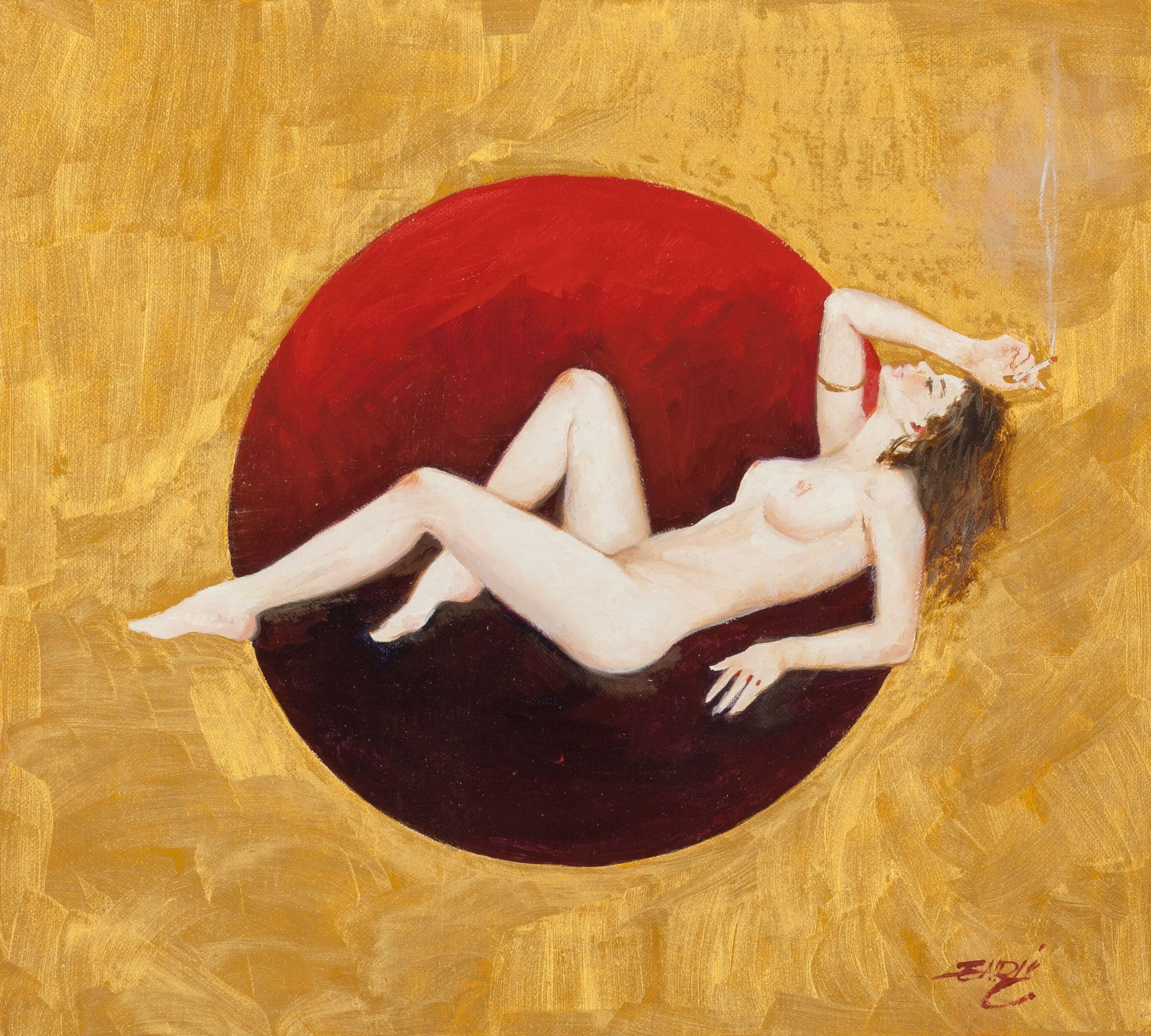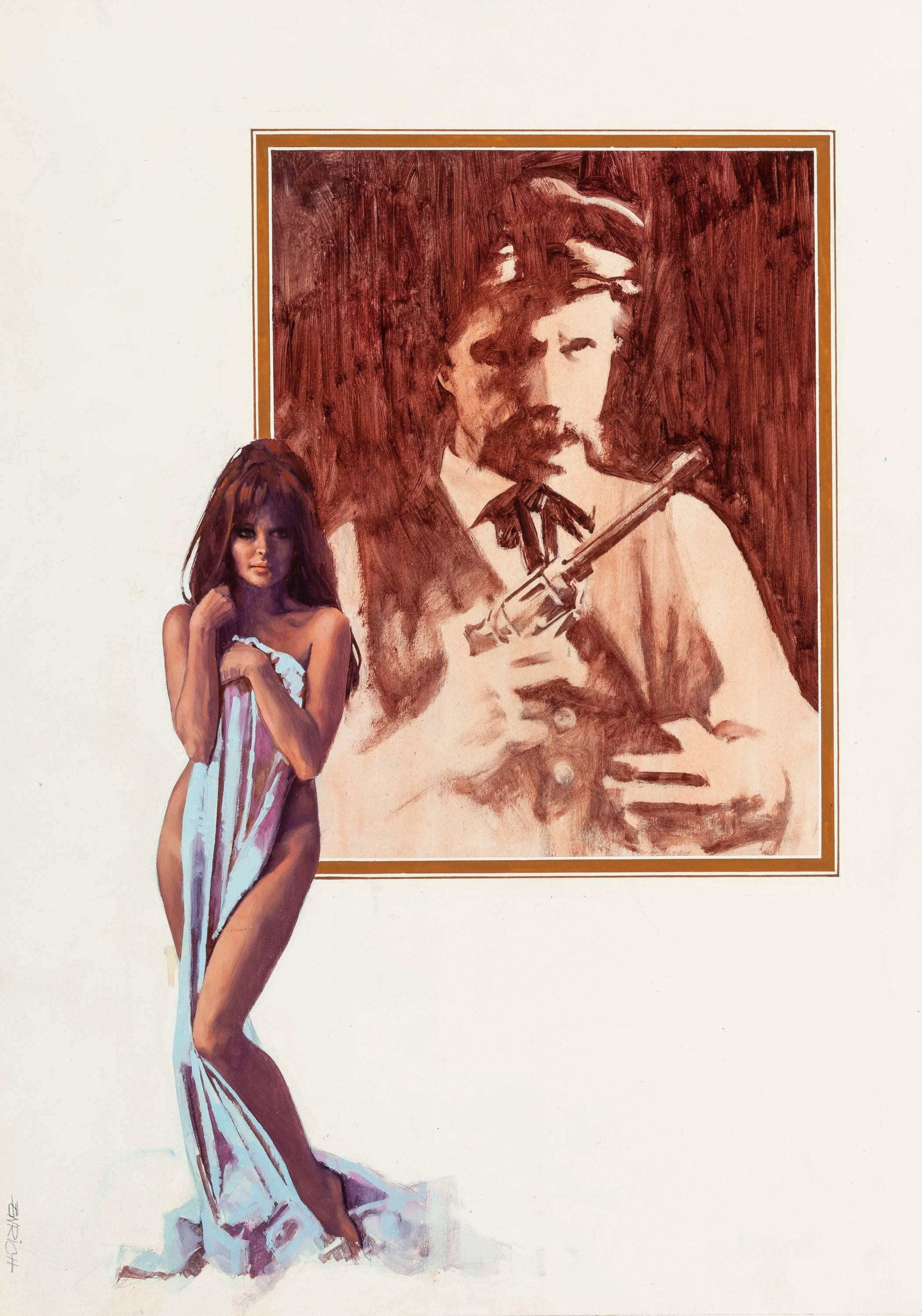Items Similar to Self Portrait, Mid-20th Century Oil
Want more images or videos?
Request additional images or videos from the seller
1 of 6
Sheila HollandSelf Portrait, Mid-20th Century Oil
About the Item
Sheila Holland
1932-2002
Self Portrait
Oil on canvas, signed lower right
Image size: 30 x 22 inches
This is a wonderfully dynamic self portrait by the female artist Shelia Holland. Capturing herself in the process of drawing, or painting, this becomes a distinctive self portrait. Despite this, there is still an interesting juxtaposition as none of the artist’s tools are illustrated, and her canvas is cut out of the pictorial space. Perhaps this choice was made as to not distract from what is clearly the intension with this work – a deep and authentic self-examination by Holland into her physical appearance and her aura.
Sheila Holland was born in Chesterfield in Derbyshire and grew up in Wolverhampton, where she studied art. Holland was a solitary and private person, eventually establishing her studio at Lower Bradford Cottage on Bodmin Moor, Cornwall in 1985.
- Creator:Sheila Holland
- Dimensions:Height: 30 in (76.2 cm)Width: 22 in (55.88 cm)
- More Editions & Sizes:1 of 1Price: $2,294
- Medium:
- Period:
- Condition:
- Gallery Location:London, GB
- Reference Number:1stDibs: LU5245875492
About the Seller
5.0
Vetted Seller
These experienced sellers undergo a comprehensive evaluation by our team of in-house experts.
Established in 2007
1stDibs seller since 2014
63 sales on 1stDibs
Typical response time: 2 hours
- ShippingRetrieving quote...Ships From: London, United Kingdom
- Return PolicyA return for this item may be initiated within 14 days of delivery.
More From This SellerView All
- Portrait of a Sleeping Woman Original Oil Painting Modern BritishBy Lionel EllisLocated in London, GBLionel Ellis 1903 - 1988 Portrait of a Sleeping Woman Oil on canvas Image size: 14 x 18 inches (35.5 x 45.5cm) Framed Lionel Ellis ARCA (1903-1988) was a...Category
20th Century Portrait Paintings
MaterialsOil, Canvas
- The Distraction, Late 19th Century Oil Painting, OrientalistLocated in London, GBWalter Charles Horsley 1855 – 1921 The Distraction Oil on canvas, signed lower left Image size: 25 x 20 1/2 inches (63.5 x 52 cm) Orientalist ha...Category
Late 19th Century Portrait Paintings
MaterialsOil, Canvas
- Portrait of a Trepanning Surgeon, Early 17th Century Oil PaintingLocated in London, GBOil on oak panel, inscribed top left ‘AETATIS SUAE 32’ Image size: 27 x 35 inches (68.5 x 89 cm) Contemporary style handmade frame This is a portrait of a medical figure from the ea...Category
Early 17th Century Portrait Paintings
MaterialsOak, Oil
- Portrait of a Girl, 17th Century English School Old Masters OilBy Gilbert JacksonLocated in London, GBGilbert Jackson English Active: 1620 - 1650 Portrait of a Girl Oil on panel, signed upper left and Inscribed upper right Image size: 24 ½ x 20 inches Contemporary style hand made...Category
17th Century Old Masters Portrait Paintings
MaterialsOil
- The Blue Headdress, Group Portrait Orientalist Oil Painting, Signed and DatedBy Emile DeckersLocated in London, GBÉmile Deckers 1885 - 1968 The Blue Headress Oil on canvas, signed lower left, inscribed and dated "Algers, 1958" Image size: 26 x 33 inches (66 x 84 cm) Hand made Orientalist gilt f...Category
1950s Portrait Paintings
MaterialsCanvas, Oil
- Portrait of William Herbert, 3rd Earl of Pembroke, Early 17th Century PortraitLocated in London, GBEnglish School, (circa 1600) Portrait of William Herbert, 3rd Earl of Pembroke Oil on panel, oval Image size: 29¼ x 23⅞ inches Painted wooden frame Provenance: 176, Collection of Francis Greville, 1st Earl of Warwick. The Trustees of the Lord Brooks’ Settlement, (removed from Warwick Castle). Sotheby’s, London, 22nd March 1968, lot 81. Painted onto wooden panel, this portrait shows a dark haired gentleman in profile sporting an open white shirt. On top of this garments is a richly detailed black cloak, decorated with gold thread and lined with a sumptuous crimson lining. With the red silk inside it’s all very expensive and would fall under sumptuary laws – so this is a nobleman of high degree. It’s melancholic air conforms to the contemporary popularity of this very human condition, evident in fashionable poetry and music of the period. In comparison to our own modern prejudices, melancholy was associated with creativity in this period. This portrait appeared in the earliest described list of pictures of Warwick castle dating to 1762. Compiled by collector and antiquary Sir William Musgrave ‘taken from the information of Lord & Lady Warwick’ (Add. MSS, 5726 fol. 3) is described; ‘8. Earl of Essex – an original by Zuccharo – seen in profile with black hair. Holding a black robe across his breast with his right hand.’ As tempting as it is to imagine that this is a portrait of Robert Devereux, the 2nd Earl Essex, we might take this with a pinch of salt. Its identification with this romantic and fatal Elizabethan might well have been an attempt to add romance to Warwick Castle’s walls. It doesn’t correspond all that well with Essex’s portraits around 1600 after his return from Cadiz. Notably, this picture was presumably hung not too far away from the castle’s two portraits of Queen Elizabeth I. The first, and undoubtedly the best, being the exquisite coronation portrait that was sold by Lord Brooke in the late 1970s and now hangs in the National Portrait Gallery. The second, described as being ‘a copy from the original at Ld Hydes’, has yet to resurface. The portrait eventually ended up being hung in the State Bedroom of Warwick Castle. Archival documents present one other interesting candidate. The Greville family’s earliest inventory of paintings, made in 1630 at their home Brooke House in Holborn, London, describes five portraits of identified figures. All five belonged to the courtier, politician and poet Sir Fulke Greville (1554-1628), 1st Baron Brooke, and were hung in the ‘Gallerie’ of Brooke House behind yellow curtains. One of them was described as being of ‘Lord of Pembrooke’, which is likely to have been William Herbert (1580-1630), 3rd Earl of Pembroke. William was the eldest son of Greville’s best friend’s sister Mary Sidney, and was brought up in the particularly literary and poetically orientated household which his mother had supported. Notably, the 3rd Earl was one of the figures that Shakespeare’s first folio was dedicated to in 1623. The melancholic air to the portrait corresponds to William’s own pretensions as a learned and poetic figure. The richness of the robe in the painting, sporting golden thread and a spotted black fabric, is indicative of wealth beyond that of a simple poet or actor. The portrait’s dating to around the year 1600 might have coincided with William’s father death and his own rise to the Pembroke Earldom. This period of his life too was imbued with personal sadness, as an illicit affair with a Mary Fitton had resulted in a pregnancy and eventual banishment by Elizabeth I to Wilton after a short spell in Fleet Prison. His illegitimate son died shortly after being born. Despite being a close follower of the Earl of Essex, William had side-stepped supporting Devereux in the fatal uprising against the Queen and eventually regained favour at the court of the next monarch James I. His linen shirt is edged with a delicate border of lace and his black cloak is lined on the inside with sumptuous scarlet and richly decorated on the outside with gold braid and a pattern of embroidered black spots. Despite the richness of his clothes, William Herbert has been presented in a dishevelled state of semi-undress, his shirt unlaced far down his chest with the ties lying limply over his hand, indicating that he is in a state of distracted detachment. It has been suggested that the fashion for melancholy was rooted in an increase in self-consciousness and introspective reflection during the late 16th and early 17th centuries. In contemporary literature melancholy was said to be caused by a plenitude of the melancholy humor, one of the four vital humors, which were thought to regulate the functions of the body. An abundance of the melancholia humor was associated with a heightened creativity and intellectual ability and hence melancholy was linked to the notion of genius, as reflected in the work of the Oxford scholar Robert Burton, who in his work ‘The Anatomy of Melancholy’, described the Malcontent as ‘of all others [the]… most witty, [who] causeth many times divine ravishment, and a kind of enthusiamus… which stirreth them up to be excellent Philosophers, Poets and Prophets.’ (R. Burton, The Anatomy of Melancholy, London, 1621 in R. Strong, ‘Elizabethan Malady: Melancholy in Elizabethan and Jacobean Portraits’, Apollo, LXXIX, 1964). Melancholy was viewed as a highly fashionable affliction under Elizabeth I, and her successor James I, and a dejected demeanour was adopted by wealthy young men, often presenting themselves as scholars or despondent lovers, as reflected in the portraiture and literature from this period. Although the sitter in this portrait is, as yet, unidentified, it seems probable that he was a nobleman with literary or artistic ambitions, following in the same vain as such famous figures as the aristocratic poet and dramatist, Edward de Vere...Category
Early 17th Century Old Masters Portrait Paintings
MaterialsWood Panel, Oil
You May Also Like
- Portrait of Young Giuseppe Garibaldi - Oil on Canvas 19th CenturyLocated in Roma, ITA rare portrait of Giuseppe Garibaldi young (here no more than 45), probably mid 19th century or a little later, realized by an unknown italian master. Good conditions except some ve...Category
19th Century Portrait Paintings
MaterialsOil
- Interwoven Socks AdvertisementBy Walter Beach HumphreyLocated in Fort Washington, PAApproximate Date: 1920-1925 Medium: Oil on Canvas Signature: Signed Lower Right Size: 29.50" x 23.00" Interwoven Socks Advertisement Literatu...Category
1920s American Modern Animal Paintings
MaterialsCanvas, Oil
- Study for Saturday Evening Post Cover, Peeling ApplesBy Joseph Christian LeyendeckerLocated in Fort Washington, PADate: Nov 28, 1925 Medium: Oil on Canvas Dimensions: 14.00" x 11.20" Signature: Unsigned Study for Saturday Evening Post Cover, November 28, 1925Category
1920s Portrait Paintings
MaterialsOil, Canvas
- Robin HoodBy William SoareLocated in Fort Washington, PADate: 1934 Medium: Oil on Canvas Dimensions: 24.75" x 16" Signature: Initialed Lower Left Cover Illustration for American Boy Magazine, May 1934 Includes copy of magazineCategory
1930s Portrait Paintings
MaterialsOil, Canvas
- Cover of Etude MagazineBy Alan FosterLocated in Fort Washington, PAMan sitting on a chair playing the accordion. Signed Lower Left on Reverse.Category
1920s Other Art Style Portrait Paintings
MaterialsOil, Canvas
- Liberty Magazine Cover, October 1, 1932By Leslie ThrasherLocated in Fort Washington, PAPortrait of a young girl with short blonde hair wearing a collared shirt and a red tie. Liberty Magazine Cover Illustration, October 1, 1932 Signed Lower Right Charle...Category
1930s Other Art Style Portrait Paintings
MaterialsCanvas, Oil
Recently Viewed
View AllMore Ways To Browse
Retro Self Portrait
Dutch 20th Century Painting
Sheila Vintage
Early 19th Century Portrait Of Gentleman
Sixteenth Century Painting
Full Length Portrait Oil Painting
Ireland Old Masters
Pair 1930s Paintings
Painting Handsome Man
English Female Portraits
Portrait Of Ferdinand
Mosaic Fragment
19th Century Military Portrait
English Female Portrait Paintings
Antique Miniature Oil Painting
Antique Miniature Oil Paintings
Victorian Oil Portrait Black
Mosaic Book
